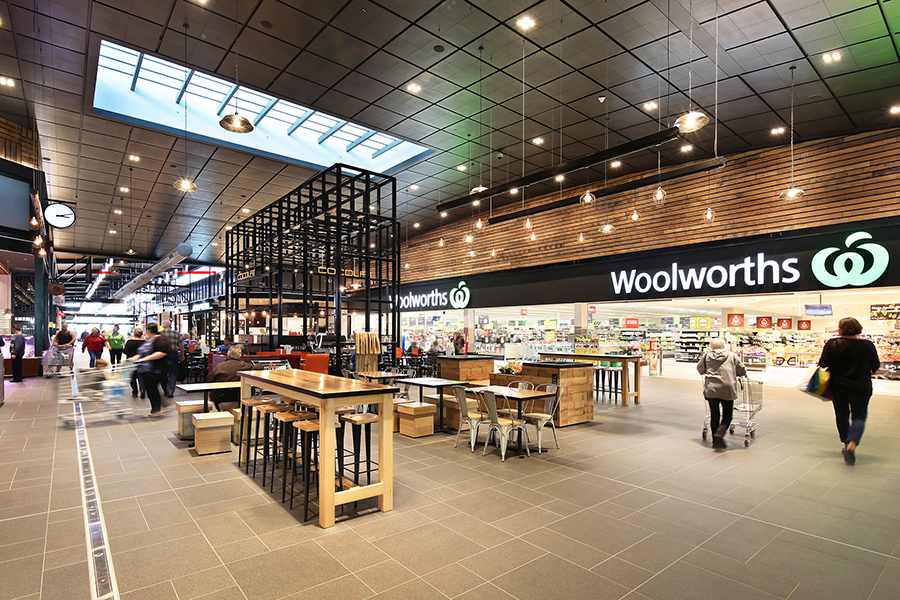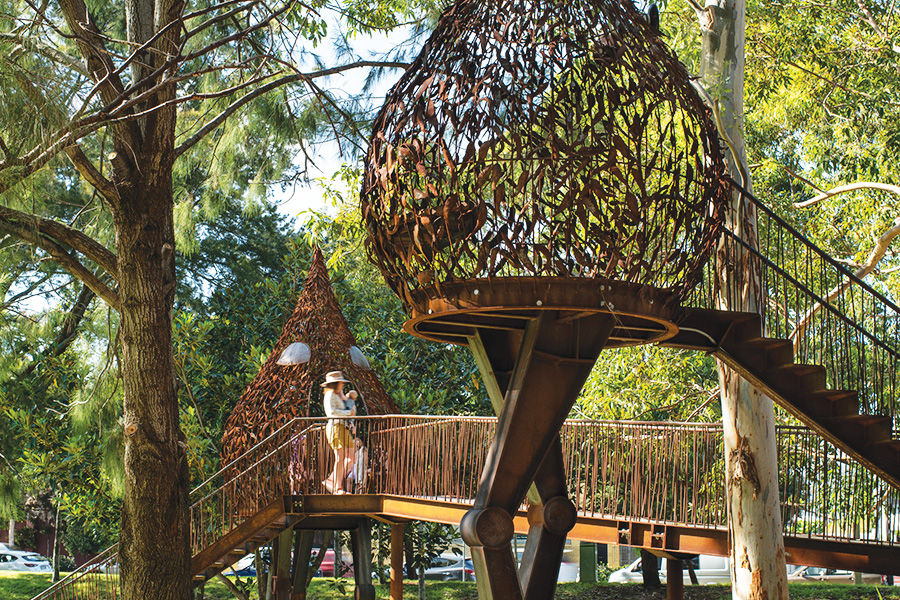It’s a given that a good ‘Customer Experience’ is vital to the success of any business. And as shopping centre executives, we all know that ‘customer experience’ is a significant factor in securing repeat visitation. But exactly what is ‘CX’? How is it defined and what does it entail? Kelvin Taylor, Project Director at Diadem explains…
In a world where competing on price and product is becoming increasingly difficult and uniqueness is becoming harder to attain, customer experience is, and will continue to be, a major differentiator. What is clear is that companies that invest in customer experience (CX) with focus and purpose will excel, while those who do not will fail.
Bad experiences drive customers away much faster than you think. In a Future of Customer Experience Survey carried out by PwC, some 32% of customers will stop doing business with a brand they loved after just one bad experience. After several bad experiences that number rises to 59%. In the context of retail and shopping centres, building a better customer experience ecosystem is an imperative that will drive customer loyalty and brand advocacy.
If you want to win the customer experience race you need to change your customer experience goals to reflect what actually matters for customers.
Companies need to weave CX into everything everyone does across the whole enterprise. Pay attention to metrics and goals. Measure, review and adapt. Look at the experience through the lens of the customer. Understand and respect your brand essence as customers see it. The reality is customers are the primary source of funding for most businesses. It makes perfect sense customers are central to everything you do. I remember a Qantas ad stating: “You’re the reason we fly.” Wow, I never would have guessed…
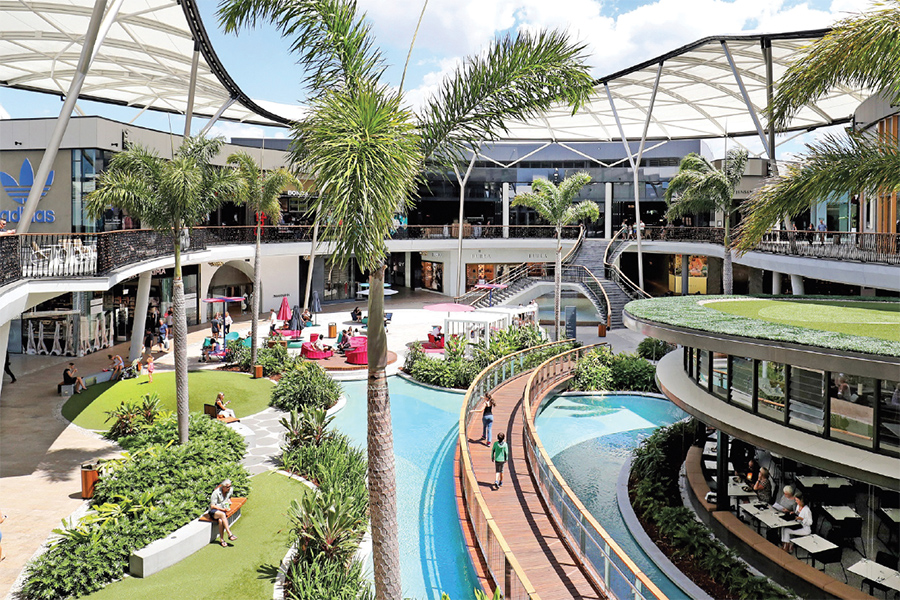
Pacific Fair, Gold Coast
When customers feel appreciated, understood and valued, companies gain measurable business benefits. In a tightening economic climate, retailers will need to amp up their CX just to hold ground.
So what is a customer experience ecosystem? At its core, it is a set of elements that operate inter-dependently within and outside of the business. Every company’s CX ecosystem is different and reflects its core values, vision and purpose. Made central to the Board of Director’s thinking and doing, the CX ecosystem will be communicated deeply across the enterprise. Participants in the CX ecosystem include customers, employees, suppliers, distributors, partners, investors and competitors, (or worthy rivals, as Simon Sinek calls them). Worthy rivals are important as they help drive continuous improvement and customer expectations.
A balanced retail CX ecosystem comprises four quadrants: human-centric elements, brand-centric elements, place-centric elements and economic-centric elements. All quadrants need to be in sync for the ecosystem to thrive.
Human-centric elements
The Human-centric quadrant includes things like community engagement and social interaction, cultural diversity and inclusion, accessibility, safety, comfort and wellbeing. Youth art projects are perhaps the most obvious way to engage with the local community. Stockland is doing this across its regional centres.
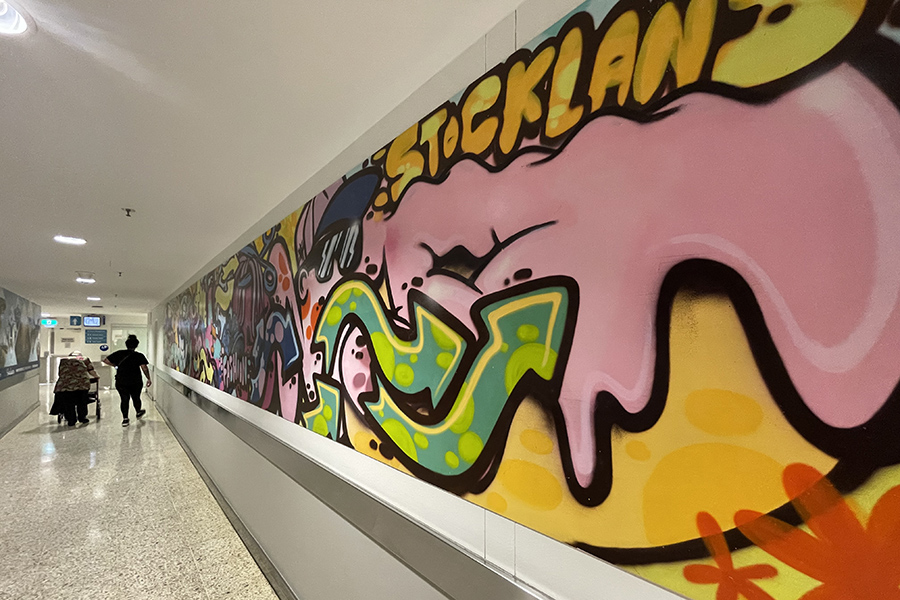
Youth art projects at Stockland
Commercial art engagement also has a place. Mirvac has a long tradition of engaging artists as a collaborative medium to give locals a voice and shape the character of a place. Creating social enterprises like community gardens or free co-work spaces for start-ups help to link people to place. Designing restrooms that cater for diversity and providing best practice accessibility and equitability like having 3D maps or downloadable MP3 audio maps for vision impaired users also goes a long way. Wellness can encompass visitors and staff. Ensuring back-of-house staff rooms are well-lit, have greenery and provide good thermal comfort, water and nutrition options is a positive statement as part of the overall ecosystem.
- Eveleigh Treehouse
- 3D Touchmap
Brand-centric elements
Brand-centric elements include sustainability and circular design, brand personality, customer touchpoints, and digital convergence. The Woolworths Free Fruit for Kids program initiated in 2015 has seen some 14,000 tonnes of free fruit consumed across its store footprint in Australia and New Zealand. This speaks loudly about their brand culture and brand promise. A key brand ecosystem element is that of store design. The need for a robust design strategy around circular design is firmly upon us.
The circular store integrates adaptable, flexible and reactive elements to reduce premature obsolescence and replacement. In essence, products are rethought and redesigned to provide the same function with less resources and waste. The circular design ecosystem impacts the entire value chain.

The Woolworths Free Fruit for Kids program
As an example, Diadem, in partnership with Federation University and CSIRO, has developed a carbon calculator to help measure all elements of a retail store design and is working with a number of retailers to improve design decisions across built elements of their fit-out. Fashion retailer COS has a circular design ethos. In their Cloche D’Or, Luxembourg store, the use of recycled WasteBasedBricks upcycled 8,960kg of waste. Research states the new generation of consumers will switch brands based on a company’s environmental stance.

COS Luxembourg store
Place-centric elements
Place-centric elements include wellness and biophilia, amenity, integrated transport nodes, placemaking, the ground plane experience and the user journey. In a shopping centre environment, the arrival and departure sequence are key aspects of the user journey that need improvement. Car parks are perhaps the most problematic space in a typical centre. Typically car parks are unwelcoming, unloved, unsafe, unlit, cluttered and generally ugly. Yet they are the first and last touchpoint for most visitors.
My tip here – don’t put engineers in charge of customer experience in your car parks.
And if you are using PGS to augment the user experience, the technology has to work 100%. Most people only make the connection between technology and customer experience when the tech fails, is slow or disrupts the process. Time spent on diving deeply into the customer parking journey from pre-planning through to arrival, pedestrian entry to store and back, will reveal several ‘moments of truth’ that can identify problems and areas of improvement.
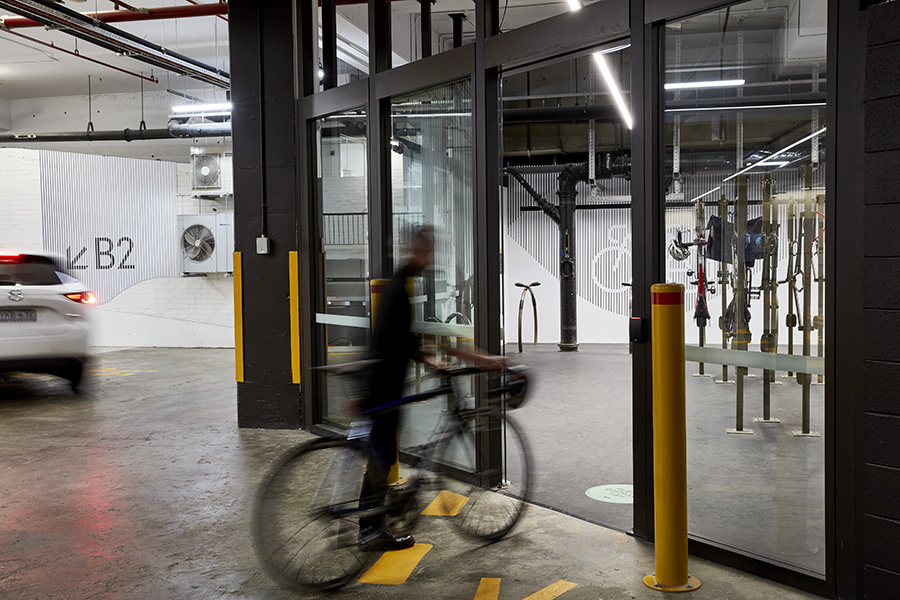
Mirvac, 55 Market St Sydney
Economic-centric elements
Economic-centric elements include tenant mix, logistics and fulfilment, demographics, omni-channel interactions and Ai. As reported recently in SCN, QIC has launched a multi-vendor online marketplace called ‘Shopindee’, an e-commerce solution for independent retailers. The e-commerce initiative enables QIC to connect with pure-play retailers and potentially support them through the transition to a pop-up, short-term or long-term physical presence. The challenge here is to use new technology with purpose to make the experience feel more human. PwC states that 82% of the top-performing companies report paying close attention to the human experience around digital and tech. While price and quality remain top of mind for customers, it is the customer interaction and experience that influences purchasing decisions in almost every industry. Some 48% of consumers point to friendly, welcoming service as uniquely defining success in an industry.

QIC’s online marketplace ‘Shopindee’
In a recent retail forum, three main questions resonated: How do we broaden the reason for people to visit a centre? How do we reduce the barriers that prevent shoppers coming in physically? How do we improve the experience when shoppers visit a centre?
The big connector here is the human aspect. People are increasingly loyal to the retailers, products, brands and devices that consistently provide exceptional value combined with minimum friction or stress, and will happily pay a premium for a great experience. Business mentor Tom Peters has been banging on about the experience economy for more than 20 years.
Companies need to get the ‘must-dos’ right. 80% of consumers point to speed, convenience, knowledgeable help and friendly service as the most important element of a positive customer experience. The key success factor for any company is to maintain the strength of CX in their DNA and keep up with the evolving expectations of customers and the broader ecosystem, both within and outside of their enterprise. But if it was simple, everyone would be doing it. Right?
This article features in the latest issue of Shopping Centre News.


